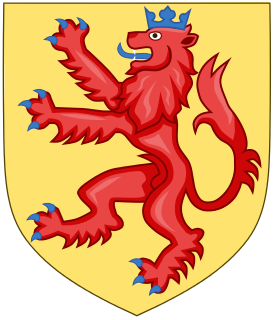
The House of Habsburg, also House of Austria, was one of the most prominent royal houses of Europe in the 2nd millennium.

Casimir IV was Grand Duke of Lithuania from 1440 and King of Poland from 1447, until his death. He was one of the most active Polish rulers, under whom Poland, by defeating the Teutonic Knights in the Thirteen Years' War recovered Pomerania, and the Jagiellonian dynasty became one of the leading royal houses in Europe.

Maximilian I was King of the Romans from 1486 and Holy Roman Emperor from 1508 until his death. He was never crowned by the pope, as the journey to Rome was always too risky. He was instead proclaimed emperor elect by Pope Julius II at Trent, thus breaking the long tradition of requiring a Papal coronation for the adoption of the Imperial title. Maximilian was the son of Frederick III, Holy Roman Emperor, and Eleanor of Portugal. He ruled jointly with his father for the last ten years of the latter's reign, from c. 1483 until his father's death in 1493.

Sigismund I the Old was King of Poland and Grand Duke of Lithuania from 1506 until his death in 1548. Sigismund I was a member of the Jagiellonian dynasty, the son of Casimir IV and younger brother of kings John I Albert and Alexander I Jagiellon. He was nicknamed "the Old" in later historiography to distinguish him from his son and successor, Sigismund II Augustus.

Louis II was King of Hungary, Croatia and Bohemia from 1516 to 1526. He was killed during the Battle of Mohács fighting the Ottomans, whose victory led to the Ottoman annexation of Hungary.

Ferdinand I was Holy Roman Emperor from 1556, King of Bohemia, Hungary, and Croatia from 1526, and Archduke of Austria from 1521 until his death in 1564. Before his accession, he ruled the Austrian hereditary lands of the Habsburgs in the name of his elder brother, Charles V, Holy Roman Emperor. Also, he often served as Charles' representative in the Holy Roman Empire and developed encouraging relationships with German princes. In addition, Ferdinand also developed valuable relationships with the German banking house of Jacob Fugger and the Castilian bank, Banca Palenzuela Levi Kahana.

John Zápolya, or John Szapolyai, was King of Hungary from 1526 to 1540. His rule was disputed by Archduke Ferdinand I, who also claimed the title King of Hungary. He was Voivode of Transylvania before his coronation, from 1510 to 1526.

Maximilian III of Austria, briefly known as Maximilian of Poland during his claim for the Throne was the Archduke of Further Austria from 1612 until his death.

Elizabeth of Austria was the wife of King Casimir IV of Poland and thus Queen of Poland and Grand Duchess of Lithuania. Orphaned at an early age, she spent her childhood in the court of Holy Roman Emperor Frederick III. As one of the three surviving grandchildren of Emperor Sigismund, she had a strong claim to the kingdoms of Hungary and Bohemia. That made her an attractive bride for a Polish prince. The Polish nobility, seeking to increase Polish influence in Hungary and Bohemia, pursued marriage with Elizabeth since she was born and finally succeeded in 1454. Her marriage to Casimir was one of the most successful royal marriages in Poland. She gave birth to thirteen children, eleven of whom survived to adulthood. Four of her sons were crowned as kings.

Johannes Cuspinianus, born Johan Spießhaymer, was an Austrian humanist, scientist, diplomat, and historian. Born in Spießheim near Schweinfurt in Franconia, of which Cuspinianus is a Latinization, he studied in Leipzig and Würzburg. He went to Vienna in 1492 and became a professor of medicine at the University of Vienna. He became Rector of the university in 1500 and also served as Royal Superintendent until his death.

Anna of Bohemia and Hungary, sometimes known as Anna Jagellonica, was Queen of Germany, Bohemia, and Hungary and Archduchess of Austria as the wife of King Ferdinand I.
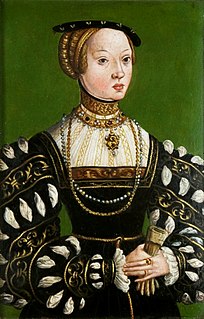
Elizabeth of Austria was a Queen consort of Poland. She was the eldest of fifteen children of Ferdinand I, Holy Roman Emperor, and his wife Anne of Bohemia and Hungary. A member of the House of Habsburg, she was married off to Sigismund II Augustus, who was already crowned as King of Poland and Grand Duke of Lithuania even though both of his parents were still alive and well. The marriage was short and unhappy. Elizabeth was of frail health, suffering from epileptic seizures, and died at age 18.

Charles II Francis of Austria was an Archduke of Austria and ruler of Inner Austria from 1564. He was a member of the House of Habsburg.
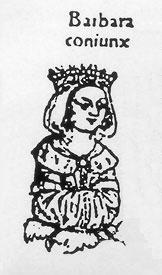
Barbara Zápolya (1495–1515) was Queen of Poland and Grand Duchess of Lithuania as the first wife of King Sigismund I the Old. Marriage to Barbara represented an alliance between Sigismund and the House of Zápolya against the Habsburgs in succession disputes over the throne to the Kingdom of Hungary. The alliance was short-lived as the renewed Muscovite–Lithuanian War forced Sigismund to look for Habsburg allies. The marriage was loving, but short. Barbara was the mother of Hedwig, Electress of Bradenburg, but died soon after the birth of her second daughter Anna.
Congress of Vienna can refer to:

Vladislaus II, also known as Vladislav, Władysław or Wladislas, was King of Bohemia from 1471 to 1516, and King of Hungary and Croatia from 1490 to 1516. As the eldest son of Casimir IV Jagiellon, he was expected to inherit Poland and Lithuania. George of Poděbrady, the Hussite ruler of Bohemia, offered to make Vladislaus his heir in 1468. Poděbrady needed Casimir IV's support against the rebellious Catholic noblemen and their ally, Matthias Corvinus, king of Hungary. The Diet of Bohemia elected Vladislaus king after Poděbrady's death, but he could only rule Bohemia proper, because Matthias occupied Moravia, Silesia and Lusatia. Vladislaus tried to reconquer the four provinces with his father's assistance, but Matthias repelled them.

The Jagiellonian dynasty was a royal dynasty, founded by Jogaila, the Grand Duke of Lithuania, who in 1386 was baptized as Władysław, married Queen Jadwiga of Poland, and was crowned King of Poland as Władysław II Jagiełło. The dynasty reigned in several Central European countries between the 14th and 16th centuries. Members of the dynasty were Kings of Poland (1386–1572), Grand Dukes of Lithuania, Kings of Hungary, and Kings of Bohemia (1471–1526). The dynasty was a cadet branch of Gediminids.
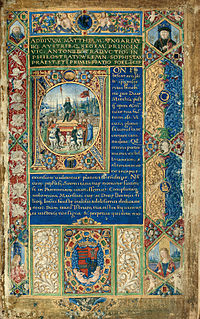
The Austrian–Hungarian War was a military conflict between the Kingdom of Hungary under Mathias Corvinus and the Habsburg Archduchy of Austria under Frederick V. The war lasted from 1477 to 1488 and resulted in significant gains for Matthias, which humiliated Frederick, but which were reversed upon Matthias' sudden death in 1490.
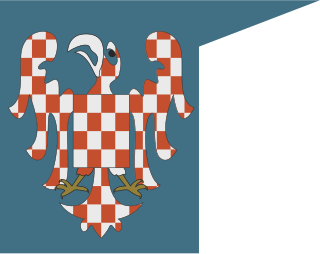
The Margraviate of Moravia was one of the Lands of the Bohemian Crown existing from 1182 to 1918. It was officially administrated by a margrave in cooperation with a provincial diet. It was variously a de facto independent state, and also subject to the Duchy, later the Kingdom of Bohemia. It comprised the region called Moravia within the modern Czech Republic.
The War of the Hungarian Succession (1490–1494) was a war of succession triggered by the death of King Matthias Corvinus I of Hungary and Croatia.



















